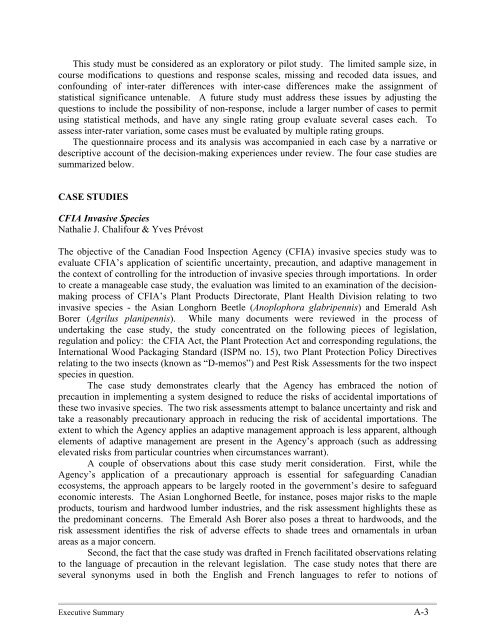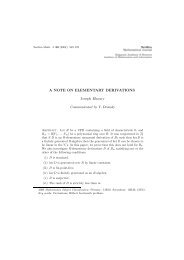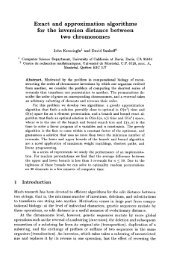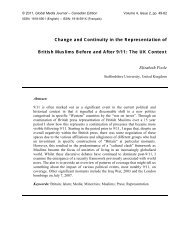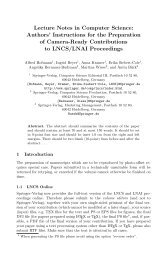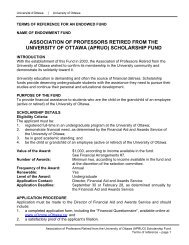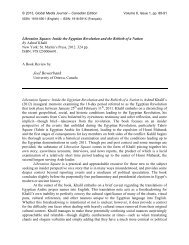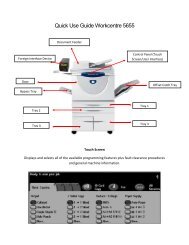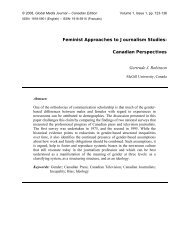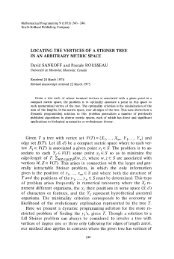PRACTICING PRECAUTION and ADAPTIVE MANAGEMENT ...
PRACTICING PRECAUTION and ADAPTIVE MANAGEMENT ...
PRACTICING PRECAUTION and ADAPTIVE MANAGEMENT ...
- No tags were found...
You also want an ePaper? Increase the reach of your titles
YUMPU automatically turns print PDFs into web optimized ePapers that Google loves.
This study must be considered as an exploratory or pilot study. The limited sample size, incourse modifications to questions <strong>and</strong> response scales, missing <strong>and</strong> recoded data issues, <strong>and</strong>confounding of inter-rater differences with inter-case differences make the assignment ofstatistical significance untenable. A future study must address these issues by adjusting thequestions to include the possibility of non-response, include a larger number of cases to permitusing statistical methods, <strong>and</strong> have any single rating group evaluate several cases each. Toassess inter-rater variation, some cases must be evaluated by multiple rating groups.The questionnaire process <strong>and</strong> its analysis was accompanied in each case by a narrative ordescriptive account of the decision-making experiences under review. The four case studies aresummarized below.CASE STUDIESCFIA Invasive SpeciesNathalie J. Chalifour & Yves PrévostThe objective of the Canadian Food Inspection Agency (CFIA) invasive species study was toevaluate CFIA’s application of scientific uncertainty, precaution, <strong>and</strong> adaptive management inthe context of controlling for the introduction of invasive species through importations. In orderto create a manageable case study, the evaluation was limited to an examination of the decisionmakingprocess of CFIA’s Plant Products Directorate, Plant Health Division relating to twoinvasive species - the Asian Longhorn Beetle (Anoplophora glabripennis) <strong>and</strong> Emerald AshBorer (Agrilus planipennis). While many documents were reviewed in the process ofundertaking the case study, the study concentrated on the following pieces of legislation,regulation <strong>and</strong> policy: the CFIA Act, the Plant Protection Act <strong>and</strong> corresponding regulations, theInternational Wood Packaging St<strong>and</strong>ard (ISPM no. 15), two Plant Protection Policy Directivesrelating to the two insects (known as “D-memos”) <strong>and</strong> Pest Risk Assessments for the two inspectspecies in question.The case study demonstrates clearly that the Agency has embraced the notion ofprecaution in implementing a system designed to reduce the risks of accidental importations ofthese two invasive species. The two risk assessments attempt to balance uncertainty <strong>and</strong> risk <strong>and</strong>take a reasonably precautionary approach in reducing the risk of accidental importations. Theextent to which the Agency applies an adaptive management approach is less apparent, althoughelements of adaptive management are present in the Agency’s approach (such as addressingelevated risks from particular countries when circumstances warrant).A couple of observations about this case study merit consideration. First, while theAgency’s application of a precautionary approach is essential for safeguarding Canadianecosystems, the approach appears to be largely rooted in the government’s desire to safeguardeconomic interests. The Asian Longhorned Beetle, for instance, poses major risks to the mapleproducts, tourism <strong>and</strong> hardwood lumber industries, <strong>and</strong> the risk assessment highlights these asthe predominant concerns. The Emerald Ash Borer also poses a threat to hardwoods, <strong>and</strong> therisk assessment identifies the risk of adverse effects to shade trees <strong>and</strong> ornamentals in urbanareas as a major concern.Second, the fact that the case study was drafted in French facilitated observations relatingto the language of precaution in the relevant legislation. The case study notes that there areseveral synonyms used in both the English <strong>and</strong> French languages to refer to notions ofExecutive Summary A-3


